LAB REPORT
Science and Technology Making Headlines
Jan. 14, 2022

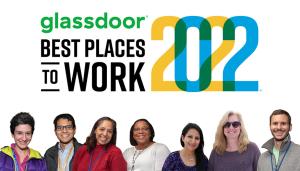
LLNL has received a Glassdoor Employees’ Choice Award, recognizing the Best Places to Work in 2022.
It’s a great place to work
For the fourth consecutive year, Lawrence Livermore National Laboratory has been honored with a Glassdoor Employees’ Choice Award, recognizing the Best Places to Work in 2022.
The Employees’ Choice Award, now in its 14th year, is based solely on the input of employees, who elect to provide anonymous feedback by completing a company review about their job, work environment and employer on Glassdoor, the worldwide leader on insights about jobs and companies.
LLNL is comprised of a world-class workforce of more than 8,000 of the best and brightest scientists, engineers, business professionals, innovators, skilled tradespeople, technical staff and more, many of whom are drawn to the Laboratory for what it stands for: “Science and Technology on a Mission.”

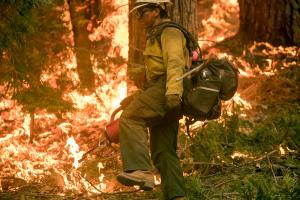
A U.S. Forest Service prescribed burn in California’s Sierra National Forest. Photo courtesy of U.S .Forest Service.
Where there’s fire
Fire may actually increase long-term carbon storage and may serve as a nature-based climate solution.
Wildfires and prescribed burns, which can promote soil organic matter stability, may be an important nature-based climate solution to increase long-term carbon storage, according to an international team of researchers, including a scientist from Lawrence Livermore, who looked at the effect of wildfires and prescribed burns on the global carbon cycle.
Soils are the largest pool of organic carbon (C) on land, and they offer both an opportunity and a risk to climate-C feedbacks in the Earth system because of their role in the global C cycle as well as their vulnerability to disturbance.

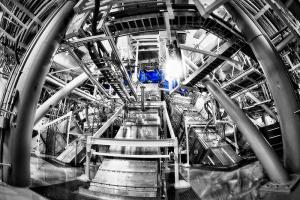
NIF beamlines entering the lower hemisphere of the NIF target chamber, as seen from the ground floor of the target bay.
Fusion for the future
To build a fusion reactor is essentially to create an artificial star. Scientists have been studying the physics of fusion for a century and working to harness the process for decades.
It’s a technology that could safely provide an immense and steady torrent of electricity, harnessing abundant fuel made from seawater to ignite the same reaction that powers the sun. It would produce no greenhouse gases and minimal waste compared to conventional energy sources.
One category of fusion involves confining the fusion fuel and compressing it in a tiny space with the aid of lasers. This is the approach used by Lawrence Livermore’s National Ignition Facility (NIF).
Researchers at NIF reported last summer that they achieved their best results yet — 1.3 megajoules of output from 1.9 megajoules of input — putting them closer than ever to energy-positive fusion. “We’re on the threshold of ignition,” said Tammy Ma, a LLNL plasma physicist at NIF.
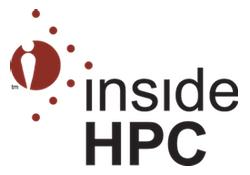
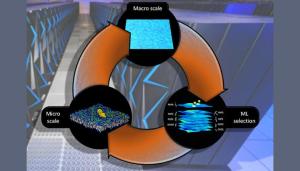
In the Multiscale Machine-Learned Modeling Infrastructure (MuMMI), the macroscale simulation runs a large system, with hundreds of proteins, at low resolution and machine learning decides which regions of the macro-model require investigation in a microscale simulation at much higher resolution. Graphic by Tim Carpenter/LLNL.
Modeling protein behavior
Lawrence Livermore researchers and a multi-institutional team of scientists have developed a highly detailed, machine learning-backed multiscale model revealing the importance of lipids to the signaling dynamics of RAS, a family of proteins whose mutations are linked to numerous cancers.
The team simulated a one-micron-by-one-micron patch on LLNL’s Sierra supercomputer and observed how hundreds of different RAS proteins interacted with eight kinds of lipids. They created more than 100,000 smaller molecular dynamic simulations from machine learning-selected “interesting” snapshots of the larger macro model simulation, enabling them to determine the probabilities of RAS binding to other proteins with a given orientation on a cell membrane.
Normally, RAS receives and follows signals to switch between active and inactive states, but as the proteins move along the cell membrane — like balls of string tumbling along a fluid ground — they combine with other proteins and can activate signaling behavior. Mutated RAS proteins can become stuck in an uncontrollable, “always on” growth state. This state is indicated in the formation of about 30 percent of all cancers, particularly pancreatic, lung and colorectal cancers.

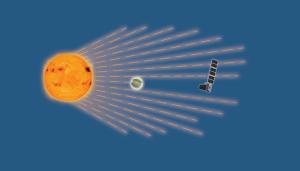
An illustration of Pandora studying an exoplanet’s atmosphere as it passes in front of its host star using transit spectroscopy. LLNL will begin building the small satellite that was recently approved to continue toward flight after a concept study. Image by LLNL, NASA’s Goddard Space Flight Center.
Opening Pandora’s treasures
After a successful concept study report and system requirements review, NASA approved the Pandora mission to continue toward flight. Lawrence Livermore and NASA's Goddard Space Flight Center are co-leading Pandora as part of NASA's new Astrophysics Pioneers program, with LLNL leading the project management and NASA GSFC leading the science.
The mission will study approximately 20 stars and exoplanets by analyzing starlight that passes through exoplanets' atmospheres, using a technique called transit spectroscopy.
Pandora will disentangle signals to understand which are from exoplanet atmospheres and which are from starspots, stellar phenomena that are similar to sunspots and can contaminate data. The celestial untangling will address and mitigate the impact of stellar inhomogeneities on exoplanet data obtained with NASA's James Webb Space Telescope, which was launched on Christmas Day.

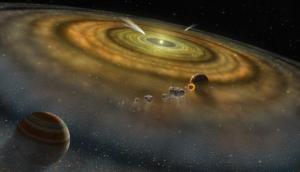
An artist’s conception of the developing solar system, with the young sun at its center and (proto-)planets accreting dust and debris from the disk. Image courtesy of NASA.
Missing in action
New research shows that Earth and Mars were formed from missing solar system material.
By looking at the range of isotopic variations in terrestrial and meteoritic samples, a Lawrence Livermore scientist and collaborators have figured out that Earth and Mars formed by collisions of planetary embryos originating from the inner solar system and not from meteorites.
Rocky planets may have formed by two fundamentally different processes, but it is unclear which one built the terrestrial planets of our solar system. The planets formed either by collisions among planetary embryos from the inner solar system or by accreting sunward-drifting millimeter-sized “pebbles” from the outer solar system.
In the new research, the team showed that the isotopic compositions of Earth and Mars predominantly result from the accretion of planetary bodies from the inner solar system, including material from the innermost disk unsampled by meteorites, with only a few percentages of a planet’s mass coming from outer solar system bodies.





